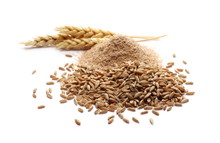You Should Be Growing Spelt

Spelt is used in baking, and is made into bread, pasta, and beer, just like wheat. Yes, if you are not from Europe, there is a thing called wheat beer.
Spelt is more suitable for storage than wheat and is more adaptable to cold climates. Organic food movement has revived its use as spelt requires less fertilizer than wheat and is more tolerant of poor soils.

Advantages:
1. Grows better on poor soil than wheat. This alone makes it a huge plus when growing food without the use of modern fertilizers.
2. Less need for pesticides as spelt hasn't had all the ancient "weed" advantages bred out of it like so many modernly grown crops. So its natural disease resistance is a huge plus for us.
3. Tougher husk protects the grain from pests as well as various diseases. And spelt is more resistant to blight and mildew than wheat.
4. Higher Nutritional value than wheat. Higher protein and fiber content than wheat. Also spelt has more micronutrients like iron, zinc, and magnesium than wheat.
Disadvantages: 1. Lower yields. But we know this might not actually be the case since we aren't growing it on a modern 10,000 acre farm with all the associated herbicides, pesticides and fertilizers.
2. More difficult to processing due to tough hulls. But this isn't such a big hurdle when you are directly processing it yourself and is certainly offset by the much longer storage shelf life. Two years!!!
Planting dates are pretty much the same as winter wheat. Typically planted from September to November in the Northern Hemisphere. And harvest would be the following year. In colder climates you may need to plant in the spring and harvest in the late summer.
Harvest when the grain heads turn from green to yellow and when the leaves begin to die.
Back to Survival Garden
